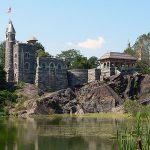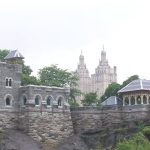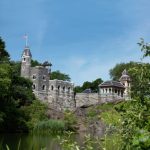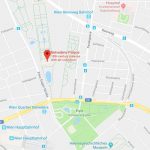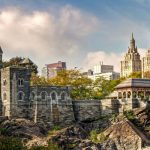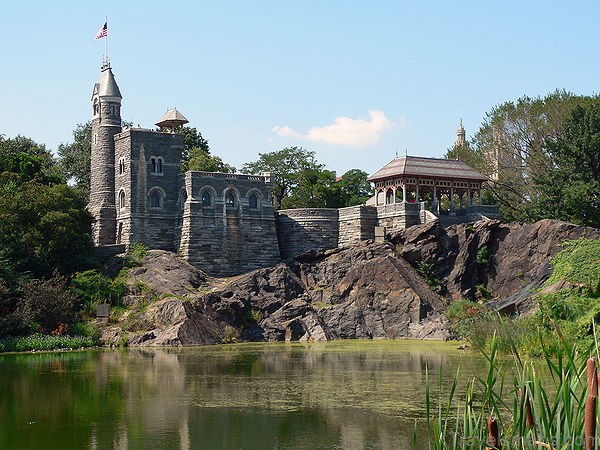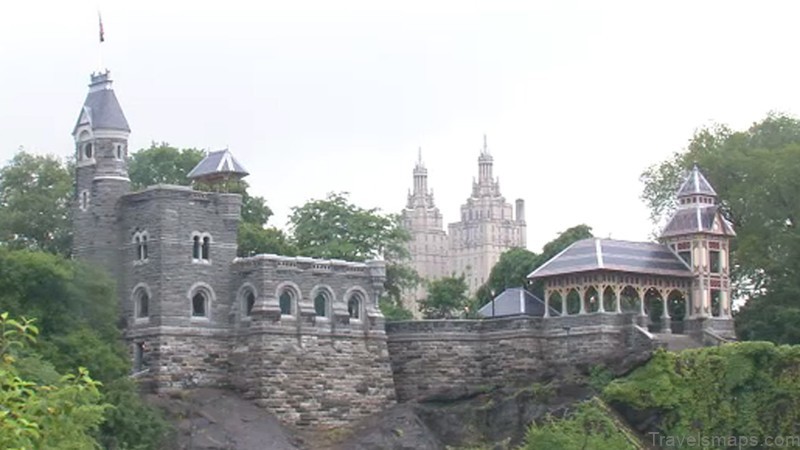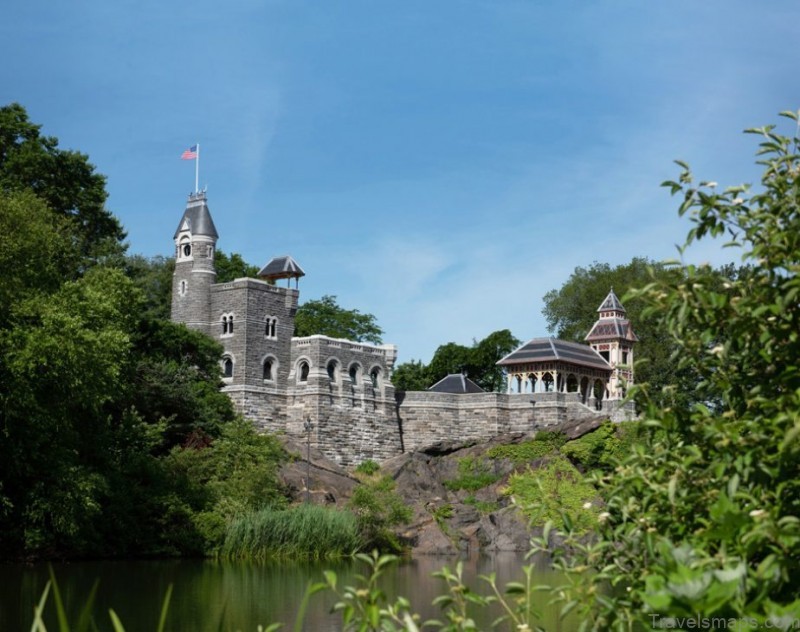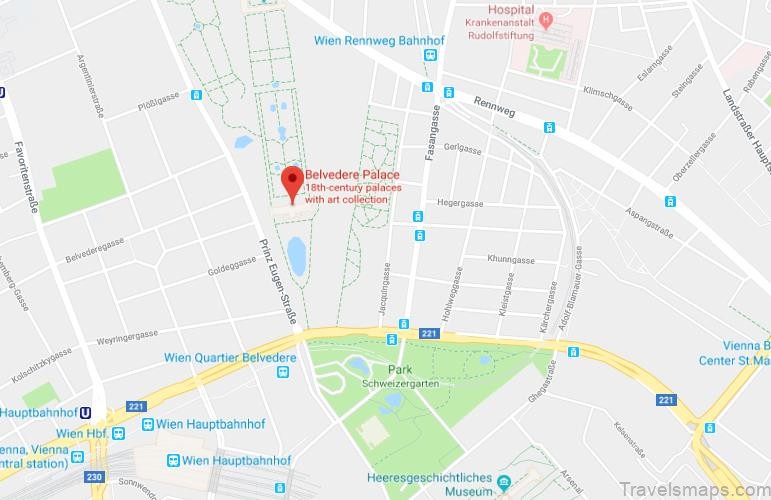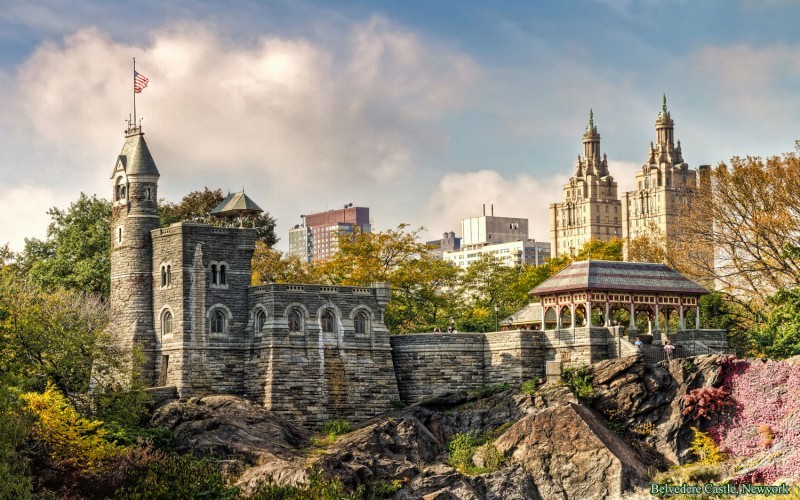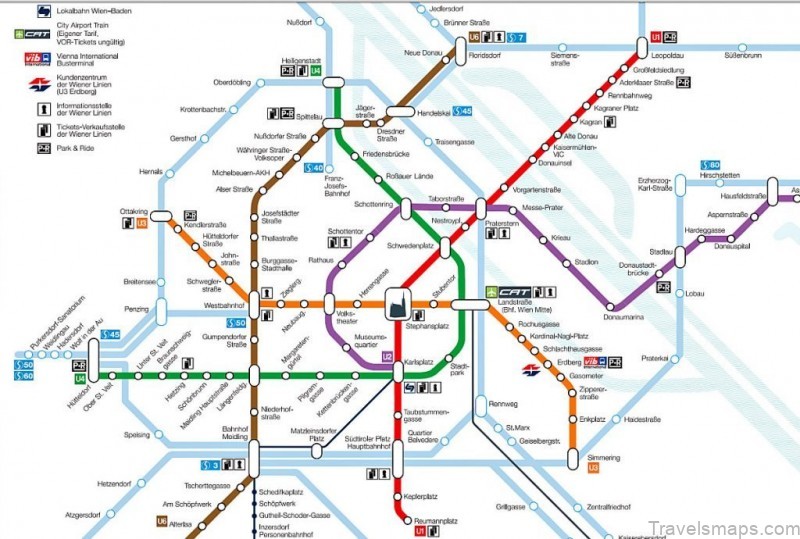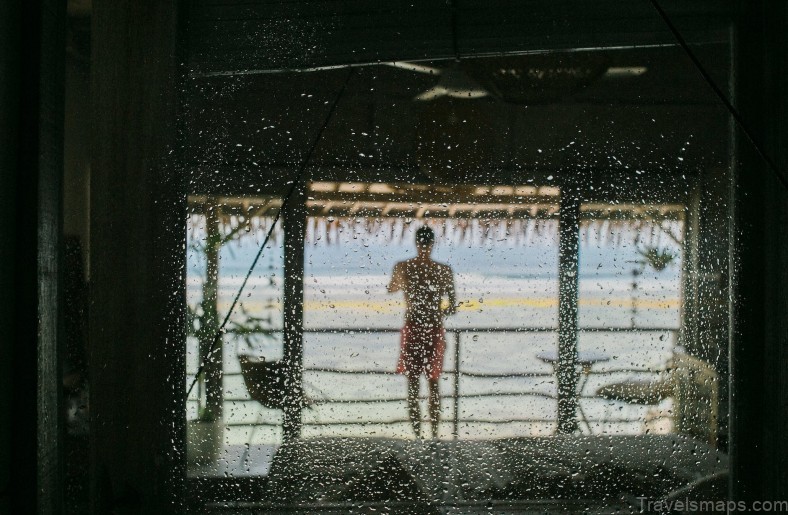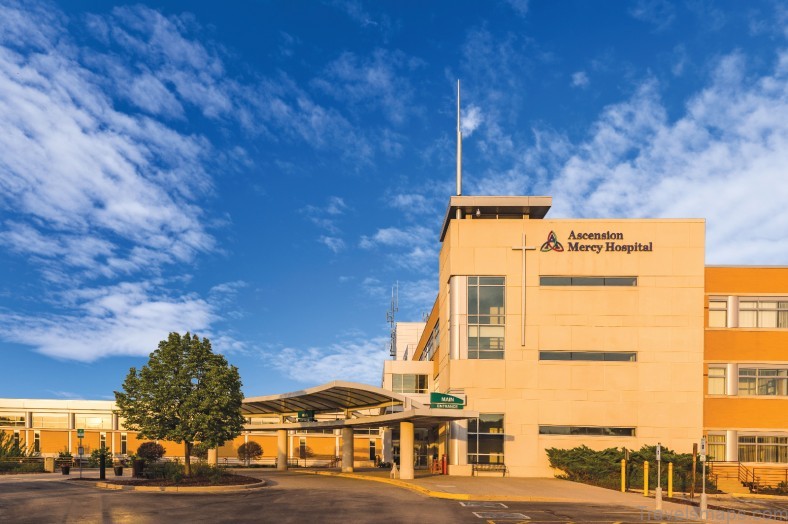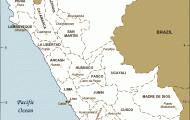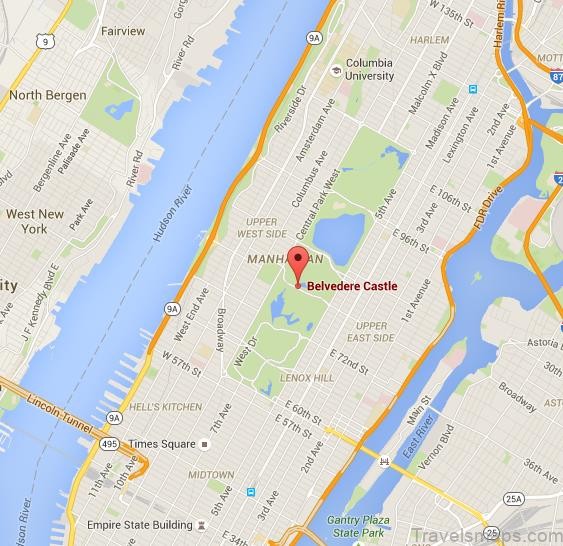
THE BELVEDERE CASTLES -WITH THE GUSTAV KLIMT COLLECTION
With the construction of Belvedere Castle , Prince Eugene of Savoy , the most successful military commander of his time, an ardent bibliophile and patron of the arts, left behind a spirited Baroque signature, which reaches from today’s Vienna Central Station to Vienna’s inner city. Prince Eugene of Savoy expressed all of his pride in his European heritage through the building of the Belvedere. The three great national styles of Baroque all come together harmoniously in this castle.
The park garden, created in the spirit of French Baroque, the double-winged castle built in Austrian Baroque style and the castle’s interior that was decorated by important Italian Baroque masters, are a mirror image of the man who commissioned them all. The original design envisioned the Belvedere as a garden castle. The architect Johann Lucas von Hildebrandt was commissioned by Prince Eugene of Savoy in 1714 to build the castle and he completed the Lower Belvedere just two years after the beginning of construction.
Together with his main competitor Johann Bernhard Fischer von Erlach, Johann Lucas von Hildebrandt executed basically all of the great public and private Viennese building projects of the time. During the reign of Maria Theresa almost all of the historical buildings of the Renaissance were destroyed and replaced with new buildings or at least completely converted to Baroque style and thus these two architects were responsible for the creation of the entire Baroque look that Vienna still today offers its visitors.
MAP OF THE BELVEDERE CASTLES Photo Gallery
The central room of the Lower Belvedere is the Marble Hall. The ceiling fresco by Martino Altomonte shows Prince Eugene as a youthful hero and as Apollo, surrounded by Muses. To the west lies the State Bedroom and to the east the Tafelzimmer – the dining room. The ceiling frescoes in the State Bedroom with the themes The Evening and The Morning are also by Altomonte. The complementary trompe l’oeil paintings – the perspectival illusionism or the 3D painting of the Baroque era, are by Marcantonio
Chiarini und Gaetano Fanti. Only a few of the rooms of the Lower Belvedere were planned as residential rooms. Most of the space was used for the Orangery and the Castle Stables.
Prince Eugene spent his youth in the Castle of Versailles. It was there that he became familiar with the art of French Baroque gardens. He invited Dominique Girard to come to Vienna to create the garden-park for the Belvedere. Girard designed the garden complementing it with his own specialty – Jeux d’eau or water games. A fountain accentuated the slope of the garden and the mirror effect of the water basin in front of the Upper Belvedere made the whole complex seem to float weightlessly.
The natural incline of the grounds, the reason that the Upper Belvedere lies much higher than the Lower Belvedere, inspired the thematic selection of the garden sculptures: They portray the ascent from the underworld to Mount Olympus.
Five years after the completion of the Lower Belvedere, Johann Lucas von Hildebrandt created the Upper Belvedere. Like a system of individual pavilions, the building is divided into numerous blocks, each one adorned with its own roof construction. At the time of construction the reference to the empty “Turkish tents” that were left behind for Prince Eugene on the battlefields by the fleeing Turks was well understood.
The Upper Belvedere
The impressive Sala terrena on the ground floor of the Upper Belvedere was laid out as a splendid grotto. Columns in form of atlantes carry the heavy ceiling on their shoulders. A Marble Hall is also at the center of this building. It is adorned with a ceiling fresco by Carlo Innocenzo Carlone. The frescoes in the chapel are by the same artist. The altarpiece in the chapel is by Francesco Solimena.
Located around the Marble Hall are the residential rooms in which today important works of the century and the Viennese Art Nouveau are shown. Certainly the best-known part of this museum is the world’s largest collection of works by the painter Gustav Klimt.
After his death, Prince Eugene of Savoy found his last resting place in a chapel in St. Stephen’s Cathedral that was created especially for him. His heart was buried near Turin in the Basilica of Superga, which houses many of the tombs of the House of Savoy.
The heirs of the Prince sold the Belvedere castle complex to Empress Maria Theresa. The Belvedere remained in the possession of the Habsburg family and the last to live here was the heir apparent Franz Ferdinand who was assassinated in Sarajevo in 1914.
The Austrian State Treaty (the act which officially ended the Allied occupation and re-established Austria as a sovereign state after World War II) was signed on May 15, 1955 in Belvedere Castle and presented to the crowds in the park by the Austrian Federal Chancellor Leopold Figl.
Oberes Belvedere | Upper Belvedere Castle
Address: Prinz Eugen-Str. 27, 1030 Vienna
Public transport: Underground: U1, U2, U4 Karlsplatz > Tram D – Schloss Belvedere
Fin de siecle and the Vienna Secession
(Klimt, Schiele and Kokoschka)
Osterreichische Galerie Belvedere
Opening hours: daily 10 am to 6 pm
Unteres Belvedere und Orangerie | Lower Belvedere & Orangery
Address: Rennweg 6, 1030 Vienna
Public transport: Underground: U1, U2, U4 Karlsplatz > Tram D – Schloss
Belvedere
Opening hours
daily 10 am to 6 pm
Wednesday 10 am to 9 pm
Maybe You Like Them Too
- Cheap Bus Tickets Guide: Budget-Friendly Road Trips
- Best Travel Backpack Guide: Choosing Your Perfect Fit
- We Travel Chronicles: Tales from the World’s Roads
- Travel Gear Guide: Essentials for Every Adventure
- Hotel de Paris Escapes: Luxury Stays Await

